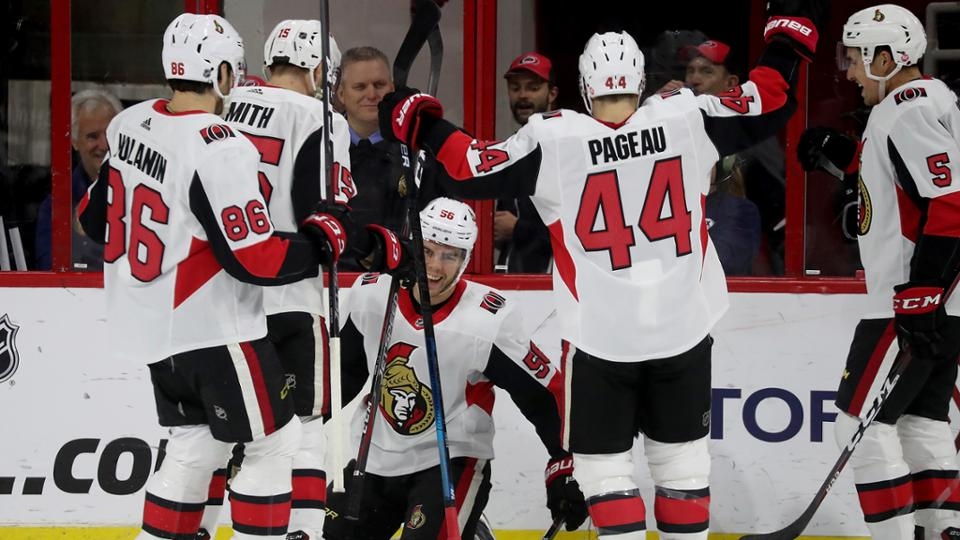
Ottawa Hockey Analytics Outlined Where the Game is Headed
The Ottawa Hockey Analytics conference at Carleton University showed how the game is evolving from a statistical standpoint.
When author and advanced statistics writer Rob Vollman stated “we might make fun of plus-minus for its weaknesses and flaws” in front of a sold out crowd at the Ottawa Hockey Analytics conference, it was an astute remark at how statistics have developed since the NHL’s inception.
The conference was held at Carleton University on Saturday, Feb. 7, to discuss various topics pertaining to advanced statistics—a term soon to expire with the NHL announcing the addition of these statistics to their website later this month.
David Johnson, who operates the resourceful hockeyanalysis.com, kicked off the day by explaining how he procures data from NHL.com resources such as the event summary pages and TOI shift reports, which basically pinpoint which players were on the ice at every moment. He then detailed some of the issues associated with Real-Time Sports Statistics and how they incorporate subjective input such as arena and scorer bias.
Andrew Thomas, from waronice.com, complemented Johnson’s presentation while also mentioning their ambitious Passing Project, which is aimed at rectifying some of the issues with the NHL’s database by forming their own community of game trackers.

Josh Weissbock, who runs CHLstats.com, then delivered an enlightening segment on developing analytics at the Junior level. He explained there are a few resources available to track rudimentary data and some of it is in fact erroneous. His site implements even-strength statistics such as Fenwick—shots on goal and missed shots—and PDO—the addition of shooting percentage and save percentage.
One of the more progressive presentations came from Sam Ventura, also from waronice.com. He argued that Corsi—shots blocked by opposition, shots missed and shots on goal— and Fenwick, while useful, are open to improvement in that it measures all shots as equal value. Ventura then discussed “weighted shots,” which accounts for shot location, distance from goal, first and secondary assists, shot type, and shot feature—rush or rebound shots. This is measured by awarding a goal with one point while a shot attempt is 0.2.
Matt Cane, of puckplusplus.com, explored this further before presenting an effective method to evaluate defensemen: goals against combined with all shot attempts against. He also explained that “Relative” advanced statistics, pertaining to Corsi and Fenwick, are more useful as it measures a player’s impact while on the ice relative to the team without him and that it is especially useful in evaluating defensemen.
Stephen Burtch then took the stage to discuss dCorsi, or delta Corsi, which accounts for player usage. The statistic basically reveals whether a player is thriving or struggling in terms of shot attempts relative to their usage. He also discussed the positive impact Ottawa Senators head coach Dave Cameron has had on the team by increasing the team’s Corsi For percentage and displaying a penchant for identifying roles to best suit his players skillsets.
Another presentation focused on data tracking, but Emmanuel Perry discussed “micro-stats” instead. He brought up Senators defenseman Cody Ceci as an example to strengthen his argument about the importance of what he called “Blue Line Events.” Perry showed how Ceci is prone to allow too many controlled entries past the Senators blue line and how this has contributed to his low puck-possession stats. He argued that controlled entries in the opponent’s zone leads to more shot attempts than dump-ins.
Up next was Andrew Berkshire, from habseyesontheprize.com, who argued against the narrative that Montreal Canadiens defenseman P.K. Subban is a defensive liability. He prefaced his case by explaining that goals are reduced by limiting shot attempts, thereby increasing possession—so blocking tons of shots is rarely a good thing. Berkshire then discussed the negative impact Therrien has had on Subban’s defensive game by making him play safer as opposed to instinctively.
Others smart hockey minds took the stage with informative presentations, discussing such topics as the benefits of adding SportsVu and the average value teams extract from internal scouting versus the Central Scouting Service.
If any of the topics in this recap interest you, be sure to check out the associated websites and give some love to the smart people who make this information accessible.










